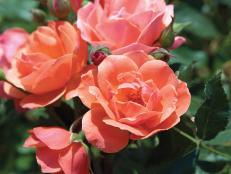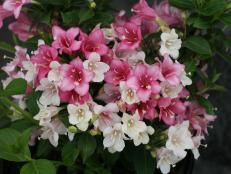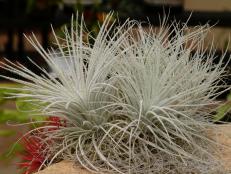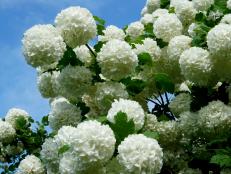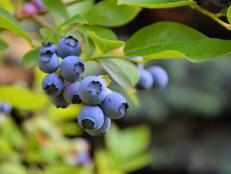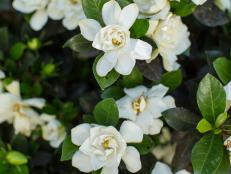Pick Perfect and Easy-to-Grow Roses

Roses are a lot like humans. Some specimens are glamorous but high-maintenance; others steal your heart with their calm, easy-going ways.
In the world of roses, some plants fall squarely into category number one. If, for instance, you crave the drama of hybrid teas — flawless, urn-shaped buds, footlong stems for cutting — it can be yours. Bear in mind, though, you'll pay for it with all-around cosseting, including weekly spraying to protect the dears from fungi. Faithfully meet their finicky requirements, and yours can be the romance of a lifetime.
If, however, you seek a more relaxed relationship and have better things to do on Saturday mornings (perhaps sleep in?) than suit up and douse flowers in fungicide, perhaps you'll be drawn to the charms of low-maintenance cultivars. They'll give their all with a minimum of care: decent soil, a sunny site, an occasional dose of fertilizer, and an admiring glance now and then.
For those interested in easy-to-love roses, begin by considering hybrid rugosas, albas, hybrid musks, kordesiis, polyanthas, and shrubs as well as the newer floribundas touted as bred for disease-resistance. To get you started, here some cultivars (listed in order of their antiquity) with a well-deserved reputation for good health and hardiness.
'Perle d'Or' (sometimes called 'Yellow Cécile Brunner'): If you appreciate diminutive plants, try 'Perle d'Or', whose grace far outstrips that of most modern miniatures. Introduced in 1884, this charming polyantha has an iron constitution. Constantly in bloom, the plant bears clusters of small, fragrant, golden-pink double flowers on a dainty, twiggy shrub that reaches 3-4 feet in height. Foliage is soft green and highly disease-resistant. 'Perle d'Or' is hardy to Zone 6 but in Northern climes can be grown in a pot and stored in a shed or garage over the winter.
'Mme. Plantier': 'Mme. Plantier' was introduced in 1835 and named for the hybridizer's wife. She must've been a dish. 'Mme. Plantier' blooms just once each spring, but what a show she puts on. Plants cover themselves in generous clusters of fragrant, very double, medium-sized cream-white blooms that age to pure white. Flowers bear a green pip in the center. Foliage is glossy, grayish-green, and disease-resistant, and canes are virtually thornless. A vigorous, bushy, spreading shrub in the hybrid alba class, it attains a height and width of 4-6 feet or more. If trained onto a trellis or other support, it can be grown as a small climber (10-12 feet). 'Mme. Plantier' tolerates some shade. Although it has the hardiness (to Zone 3 or 4) you'd expect from an alba, it grows well in climates as warm as Zone 8.
'Sally Holmes': The shrub-rose craze began in the 1980s, but 'Sally Holmes', which debuted in 1976, was way ahead of the curve. 'Sally Holmes' wins not only gold medals but also popularity contests, having topped the charts as American Rose Society members' top-rated large garden and exhibition rose for three years running, from 1994-96. Plants produce generous clusters of large, creamy-white single flowers blushed with pink, with golden stamens. Repeat bloom is rapid, and blossoms bear a light fragrance. The dark-green, glossy leaflets are disease-resistant. This vigorous, somewhat lax shrub grows to 7-10 feet in height and an equal spread. 'Sally Holmes' can also be trained as a pillar or climbing rose. Hardy to Zone 4.
'Cornelia': 'Cornelia' makes an excellent introduction to the hybrid musks, an easy, good-natured class of roses that tolerate a bit of shade and shrug off diseases. Introduced in 1925, it bears sprays of small, double, strawberry rosettes flushed yellow, with yellow stamens. 'Cornelia' repeats reliably, with good late-season bloom and a sweet fragrance. Foliage is dark green and glossy, and canes are moderately prickly. A vigorous, arching shrub, 'Cornelia' reaches 5-7 feet in height and an equal spread. Like many other hybrid musks, it can be trained as a short climber, reaching 12 feet with support. Hardy to Zone 5 or 6.
'John Cabot': Introduced in 1978, 'John Cabot' was the first of the Canadian Explorer series bred in Ottawa. Like those that followed, it's a keeper — disease-resistant, beautiful and hardy, in this case to Zone 3. A shrub in the class kordesii, 'John Cabot' bears large clusters of fragrant, cupped, semidouble, deep-pink blooms with golden stamens. Some petals are marked with a distinctive small white stripe. Spring bloom is heavy, with a good repeat in late summer. Foliage is yellow-green, and growth is upright, vigorous, and arching. 'John Cabot' can be grown as a 6-foot shrub or, with support, a 10-foot climber.
'Cramoisi Supérieur': At its best in the Deep South and other hot climes, this luscious China rose blooms nearly nonstop, producing ample clusters of rounded, velvety crimson blooms with a silvery reverse and a light, fruity fragrance. Plants have small, glossy dark-green leaves with excellent disease-resistance and reach a height of 3 to 5 feet. With its healthy foliage and constant color, 'Cramoisi Supérieur' makes a fine low hedge. Also called 'Agrippina' and 'Lady Brisbane', this cultivar was introduced in 1832. Plants are hardy to Zone 7 but might survive in Zone 6 if grown on their own roots or given winter protection.







